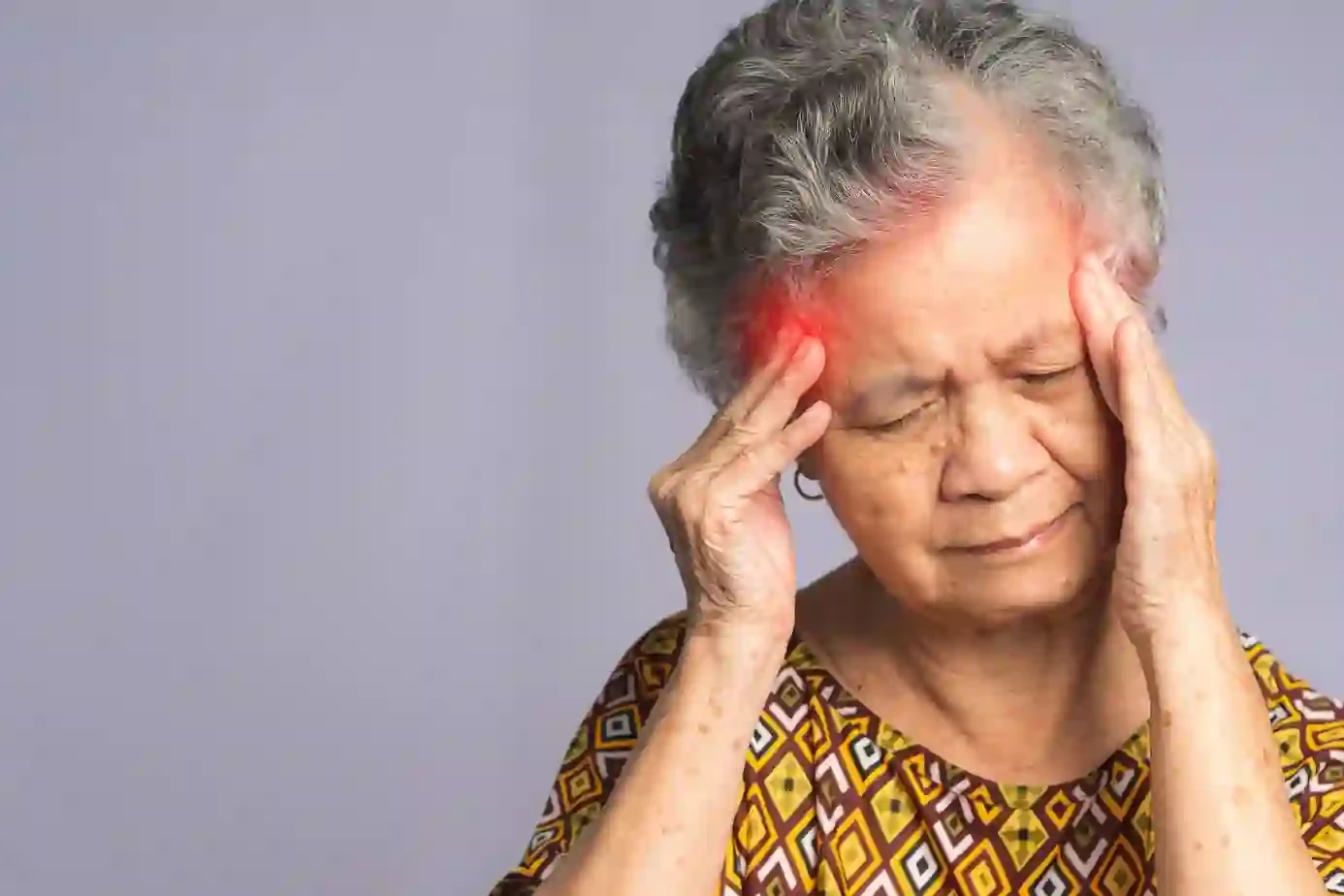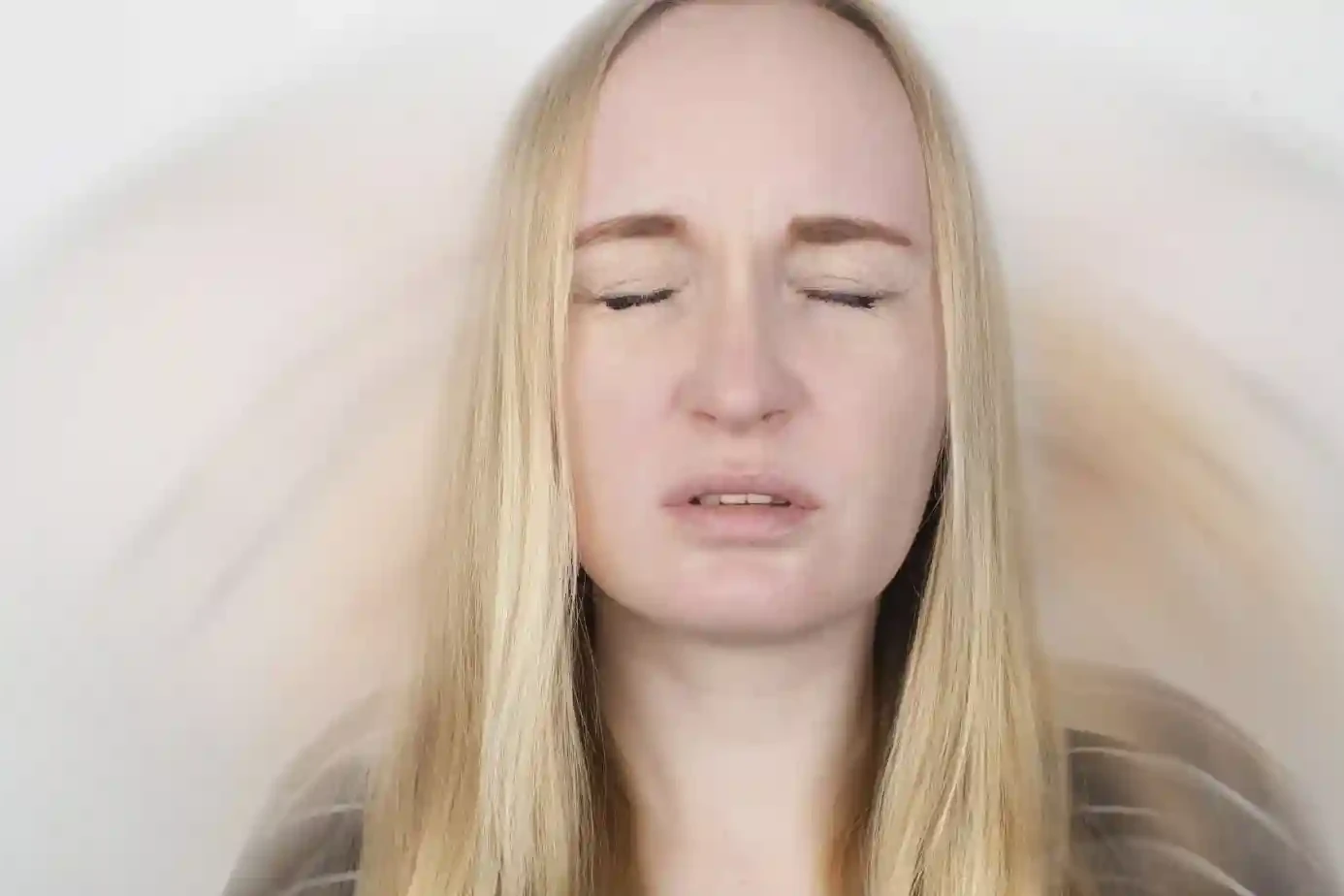Basilar migraine is a rare but striking form of migraine that starts in the brainstem and leads to unique neurological symptoms before the headache even begins.
Doctors often call it migraine with brainstem aura, a term that better reflects how the brain’s electrical signals rather than blood vessels cause the symptoms. Because the signs can mimic stroke or seizure, this migraine type creates anxiety for patients and challenges for doctors. Understanding it in detail helps reduce fear and guides proper treatment.
Table of Contents
ToggleOverview
What Is A Basilar Migraine?
The brainstem is the lower part of the brain that controls functions such as vision, speech, hearing, and balance. In basilar migraine type, temporary changes in nerve signals in that area produce a set of neurological signs called an aura.
After the aura, a headache usually follows, though not always. The aura may bring double vision, imbalance, ringing in the ears, or slurred speech, symptoms that are uncommon in other migraines.
How Common Is Basilar Migraine?
This migraine pattern is rare compared to the typical migraine with aura. It usually starts in teenagers or young adults. Girls and young women are more likely to be affected. Many patients also have a family history of migraine, and researchers believe certain gene changes like ATP1A2 and CACNA1A may increase the risk. Even though it is rare, doctors should know about it since early diagnosis prevents unnecessary panic and avoids incorrect treatments.
Basilar Artery Migraine Vs. Other Migraine Types
In the past, the condition was labeled basilar artery migraine, based on the belief that one artery at the back of the brain was constricting. Modern studies show that nerve cell changes, not blood flow, are the root problem.
Unlike classic migraine aura, which often involves flashing lights or zigzag patterns in one eye, brainstem aura is broader. The signs may include unsteady movement, hearing disruption, or confusion. This makes the condition more complex than simple migraine with aura.
What Are The Symptoms Of Basilar Migraine?
Migraine With Brainstem Aura Symptoms
Migraines with brainstem aura symptoms usually appear in a cluster and last from five to sixty minutes. These may include:
- Vision disturbances (lights, spots, static, vision loss, double vision). Sometimes patients experience double vision migraine that makes objects overlap.
- Vertigo and visual aura, where the world spins while bright lights or visual static appear.
- Slurred speech and migraine aura, where speech becomes unclear or slow.
- Tinnitus or hearing disruption, such as ringing, buzzing, or muffled sounds.
- Numbness (face, hands, head) on one or both sides.
- Headache with balance issues that makes standing or walking difficult.
- Confusion or disorientation, making it hard to focus or respond.
- Ataxia, or poor muscle control, which can mimic a neurological disease.
- Decreased consciousness in rare cases, where the patient may appear drowsy or unresponsive.
Not everyone develops a headache afterward. Some may experience aura without headache, which can confuse both patients and doctors. Because these signs overlap with stroke, emergency rooms often first evaluate for brain injury, leading to cases of migraine misdiagnosis as stroke.
How Long Does A Basilar Migraine Last?
The aura phase usually lasts less than an hour, but the headache, if present, can continue for several hours or even days. Recovery time often extends into the next day with fatigue, brain fog, or dizziness. Unlike brief tension headaches, this disorder brings both short warning signs and longer recovery.
How Is Basilar Migraine Diagnosed?
A neurologist typically diagnoses this migraine after ruling out other conditions. Diagnosis starts with a detailed history. Doctors ask which symptom came first, how long it lasted, and whether it repeated in past attacks. To exclude stroke or seizure, brain imaging such as MRI / CT scan is often ordered. An electroencephalogram (EEG) may be considered if seizures are suspected.
Specialists rely on the International Headache Society criteria, which require at least two brainstem-related aura symptoms without motor weakness. The American Headache Society also guides safe diagnosis and management. Because the signs mimic several other conditions, careful assessment is crucial.
Basilar Migraine Vs. Vestibular Migraine
Basilar migraine and Vestibular migraine can overlap, but they are distinct. Vestibular migraine focuses more on balance and spinning sensations, while basilar migraine shows a variety of brainstem symptoms at once.
| Feature | Basilar Migraine | Vestibular Migraine |
| Main source | Brainstem dysfunction | Vestibular (inner ear) pathways |
| Aura signs | Double vision, slurred speech, hearing changes, confusion | Mainly vertigo, dizziness, motion sensitivity |
| Aura length | 5 to 60 minutes | Hours to days |
| Headache | Often follows aura | May occur or be absent |
| Common misdiagnosis | Stroke, seizure | Ear disorder such as vestibular neuritis |
What Causes Basilar Migraine?

Basilar Migraine Causes
The exact basilar migraine causes are linked to temporary electrical and chemical shifts in the brainstem. Genetic studies show mutations in the ATP1A2 and CACNA1A genes can make brain cells more excitable. This leads to abnormal signaling during triggers.
Common triggers include bright or flashing lights, lack of sleep, stress, altitude shifts, or weather / altitude changes. Certain medications (birth control, blood pressure drugs) are known to trigger some patients. Food and drink like alcohol and items containing MSG (monosodium glutamate) may also set off attacks. Motion sensitivity, fatigue, and hormonal changes further increase risk.
Basilar Migraine Risk Factors
Risk factors include female gender, teenage to early adult age, family history, and early onset of migraine with aura. People with motion sickness or a history of visual auras are more likely to develop it. Hormonal influence is significant, as many women report worsening around their menstrual cycle.
Who Is Most Likely To Develop A Basilar Migraine?
Young women with a strong family history of migraine are most likely to develop this condition. Patients with motion sickness and relatives who carry CACNA1A or ATP1A2 mutations also face higher risk. Although rare, men and children can also be affected.
What Is The Treatment For Basilar Migraine?
Treatment plans combine medicines with healthy lifestyle habits. The aim is to reduce frequency, shorten duration, and ease severity.
Medications To Treat Acute Attacks (Abortive)
During attacks, pain relief is important. NSAIDs (ibuprofen) help reduce headache intensity. Antiemetics (metoclopramide) treat nausea and vomiting. CGRP antagonists (rimegepant, ubrogepant) are newer drugs proven effective in acute migraine relief, including brainstem types.
Use of Triptans / ergotamines is controversial. Older guidance avoided them in basilar migraines due to vessel concerns, but some neurologists may prescribe them cautiously if other options fail. The choice of basilar migraine medication must always consider stroke and heart disease risks.
Medications To Prevent Attacks (Preventive)
If attacks occur often, preventive treatment is recommended. Drugs include beta-blockers, calcium channel blockers (verapamil), anticonvulsants (topiramate), and antidepressants (amitriptyline). These reduce nerve excitability and lower migraine frequency. Monoclonal antibodies targeting CGRP are also effective long-term solutions.
Diet And Lifestyle Changes For Basilar Migraine
Daily habits make a big difference. Lifestyle modifications (sleep, dark room, ice pack, relaxation, diet) should be part of every plan. Maintaining a sleep routine, eating balanced meals, and avoiding personal triggers reduce episodes. A cool dark room helps during attacks. Stress management through yoga or meditation provides added relief. Limiting alcohol and avoiding foods rich in MSG are proven preventive steps.
What Is The Outlook For People With Basilar Migraine?
The outlook is generally good if patients follow a proper plan. While the symptoms may look alarming, long-term brain damage is rare. Attacks can disrupt school, work, and social life, but with preventive therapy and lifestyle care, frequency usually decreases.
Still, patients with vascular risk factors must be cautious. Migraine with aura, including basilar type, is linked to a slightly higher risk of stroke, especially in women who use estrogen-containing contraceptives. Working with a neurologist ensures safety and effective management.
FAQs
What is a basilar migraine with brainstem aura?
It is a migraine subtype where the aura comes from the brainstem, leading to vision, balance, speech, and hearing changes before the headache begins.
What is the best treatment for basilar migraine?
The best treatment combines fast relief with NSAIDs or CGRP drugs, and preventive options like verapamil or beta-blockers when attacks become frequent.
What are the worst types of migraines?
The worst types are those causing severe aura, motor weakness, or prolonged confusion, such as hemiplegic migraine or migraine with brainstem aura.
Is migraine with aura serious?
Yes, migraine with aura may raise stroke risk and often mimics dangerous brain conditions. New or worsening aura symptoms should always be assessed by a doctor.
How long does a basilar migraine last?
The aura lasts five to sixty minutes, followed by a headache lasting several hours to days, with fatigue or dizziness persisting after recovery.
What is the strongest treatment for migraines?
The strongest treatment depends on the case, but CGRP-targeting drugs and certain preventive medications like topiramate or verapamil show high success rates.
Can diet affect basilar migraines?
Yes, diet strongly affects migraines. Alcohol, MSG, and irregular meals can trigger attacks, while consistent balanced nutrition helps lower the frequency.
About The Author

This article is medically reviewed by Dr. Chandril Chugh, Board-Certified Neurologist, providing expert insights and reliable health information.
Dr. Chandril Chugh is a U.S.-trained neurologist with over a decade of experience. Known for his compassionate care, he specializes in treating neurological conditions such as migraines, epilepsy, and Parkinson’s disease. Dr. Chugh is highly regarded for his patient-centered approach and dedication to providing personalized care.
→ Book a consultation to discover which remedies suit your needs best.





